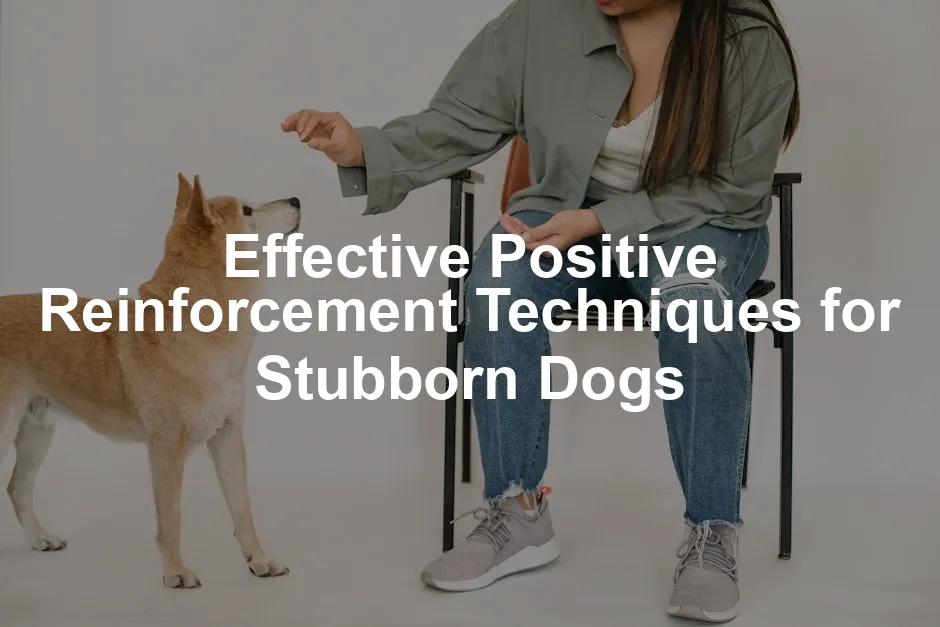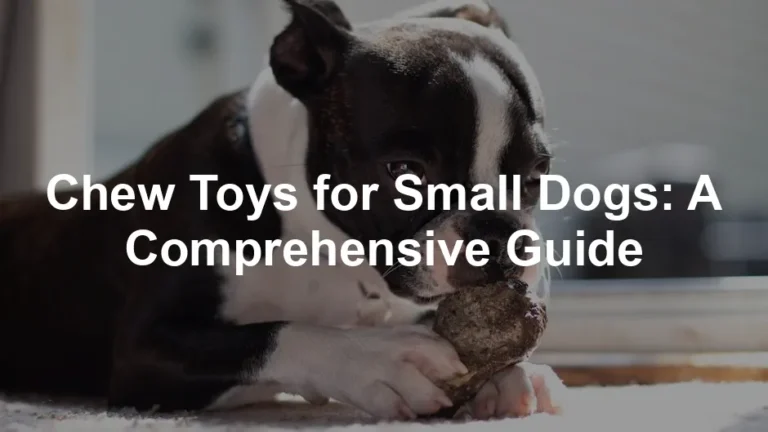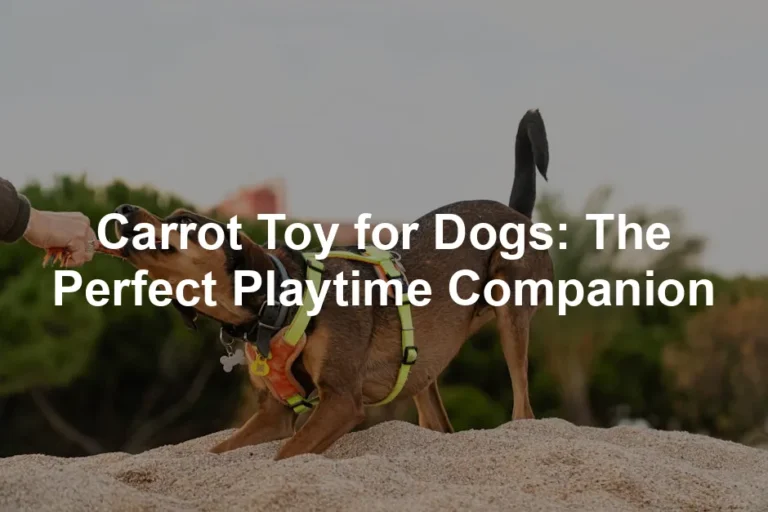Introduction
Training a stubborn dog can feel like trying to convince a cat to take a bath—an uphill battle! However, with the right techniques, you can turn your training sessions into fun and productive experiences. This article will focus on effective positive reinforcement methods that not only enhance obedience but also strengthen the bond between you and your furry friend.
Positive reinforcement is the secret sauce in dog training. Instead of punishing undesirable behavior, this approach encourages good behavior by rewarding it. When used correctly, it creates a happy and motivated pup eager to learn.
The goal here is to arm you with a treasure trove of practical techniques. Let’s dive into the nitty-gritty of understanding stubbornness in dogs and how to tackle it effectively.
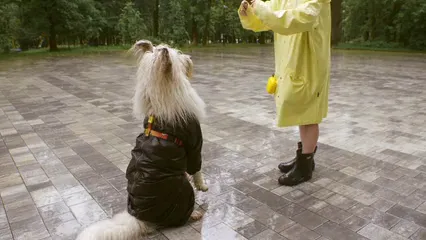
Understanding Stubbornness in Dogs
What Does Stubbornness Mean?
Stubbornness in dogs often refers to a reluctance to comply with commands or training cues. But let’s clear the air: stubbornness doesn’t mean your dog is untrainable. It’s more about their unique personalities and life experiences. For instance, some breeds, like the Shiba Inu, are known for their independent streaks. They may simply prefer to do things their way.
Many dog owners mistakenly label their pets as stubborn. This misconception can stem from frustration during training sessions. Instead of viewing these behaviors as defiance, it’s crucial to recognize them as part of your dog’s personality.
The truth is, dogs learn in various ways. Each pup has its own style, and understanding this can be the key to successful training.
Causes of Stubborn Behavior
Stubbornness can arise from various factors. Breed traits often play a significant role. Breeds like the Afghan Hound or the Bulldog may exhibit traits that seem stubborn due to their independent nature.
Lack of motivation is another contributing factor. If your dog doesn’t find your training methods engaging, they might appear stubborn. Fear or past negative experiences can also cause a reluctance to comply.
Consider this: if a dog has had a rough past, it might resist commands out of fear or anxiety. Thus, understanding the emotional background of your dog can aid in tailoring your training methods more effectively.
The Importance of Understanding Your Dog’s Needs
Recognizing your dog’s unique needs and motivations is vital. Dogs, much like humans, respond better when their individual preferences are considered. For example, some dogs thrive on praise, while others may prefer playtime or tasty treats.
By understanding what makes your furry friend tick, you can adjust your training methods accordingly. This tailored approach not only enhances effectiveness but also fosters a deeper bond between you and your pup.
In summary, stubbornness in dogs is often a blend of personality, breed, and motivation. By understanding these factors, you can adapt your training techniques to promote cooperation. So, roll up your sleeves, and let’s get to work—training those stubborn dogs like a pro!
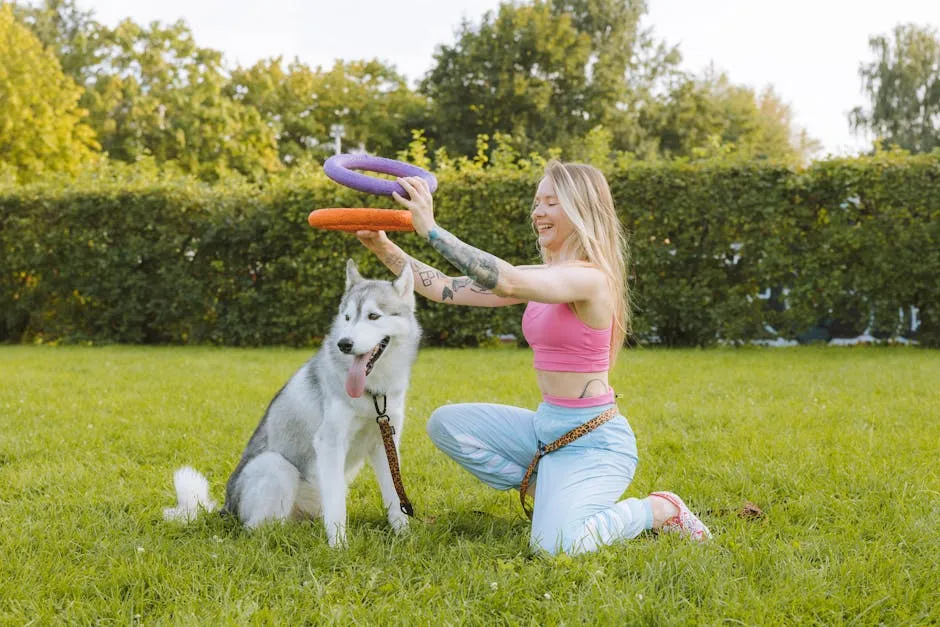
Key Principles of Positive Reinforcement
What is Positive Reinforcement?
Positive reinforcement is a training method that rewards desired behaviors. When a dog performs a desired action, they receive a reward, like treats or praise. This technique emphasizes encouraging good behavior rather than punishing unwanted behavior.
Unlike punishment-based training, which can create fear and anxiety, positive reinforcement builds trust. It fosters a positive atmosphere for learning. Dogs become eager to repeat actions that lead to rewards. This approach not only improves behavior but also strengthens the bond between dogs and their owners.
In essence, positive reinforcement is about creating a win-win situation. Your dog learns what behaviors are desirable, and you get a well-behaved companion. It’s a fun, effective, and humane way to train your furry friend.
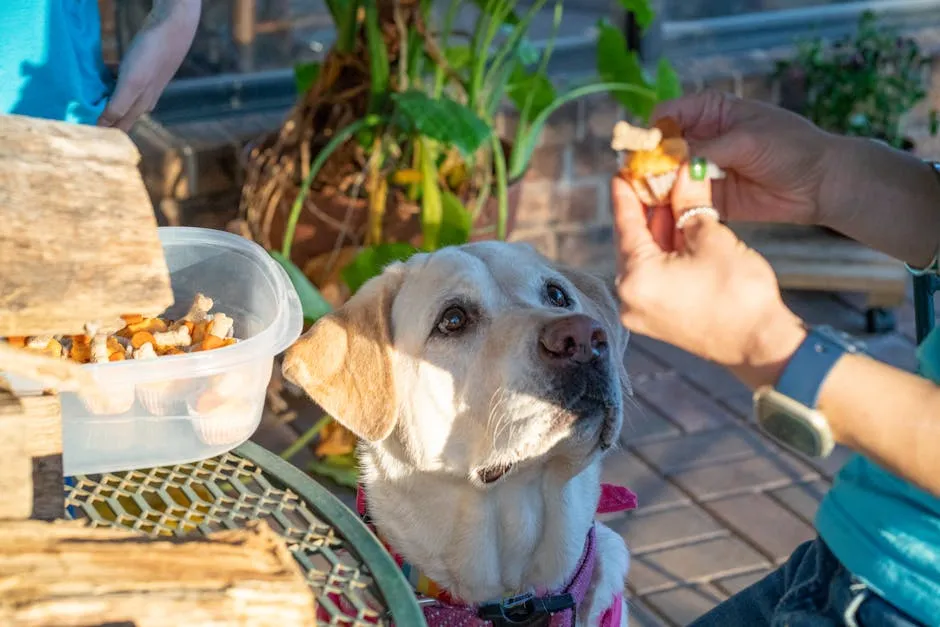
Benefits of Positive Reinforcement
Positive reinforcement is your secret weapon in dog training. Why? Because it has a myriad of benefits that extend beyond mere obedience. First and foremost, it builds trust between you and your stubborn pooch. When your dog associates positive outcomes with their actions, they learn to trust your guidance. This trust is the foundation of a strong bond, making your dog more willing to listen and learn.
Moreover, positive reinforcement significantly reduces anxiety. Unlike punishment-based methods that can instill fear, this technique fosters a relaxed environment. Your dog feels safe and secure, which leads to better focus during training sessions. According to a study published in the Journal of Veterinary Behavior, dogs trained with positive reinforcement show lower stress levels and increased enthusiasm for learning.
Lastly, using positive reinforcement can speed up the learning process. Dogs are more likely to repeat behaviors that earn them rewards. When you reward immediately after a desired action, your dog connects the dots faster. This not only aids in learning commands but also helps in correcting undesired behaviors. Expert dog trainers advocate for this method because it leads to quicker and more lasting results.
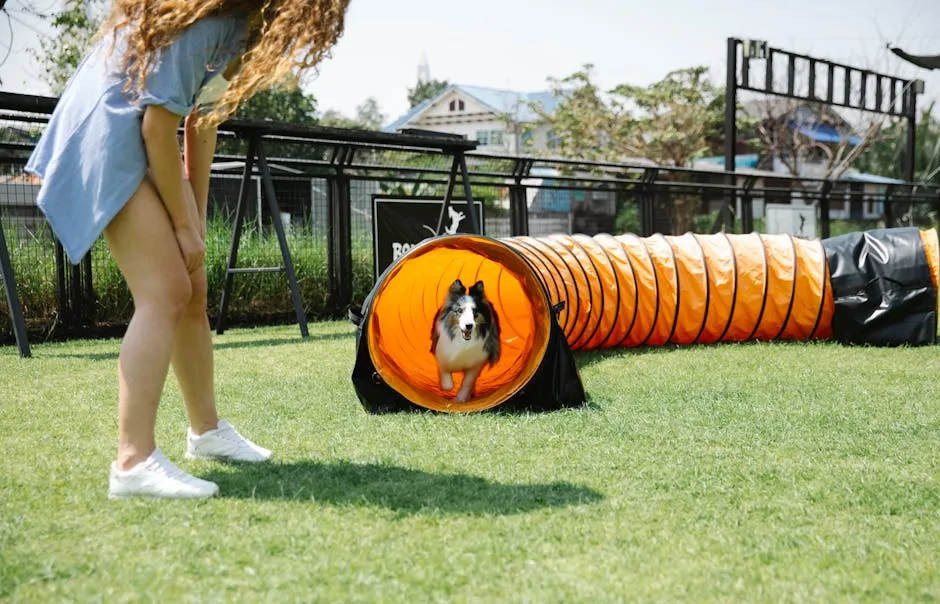
Essential Components of Positive Reinforcement
1. Timing: When it comes to rewards, timing is everything! You need to reward your dog right after they perform the desired behavior. This helps them make a clear connection between their action and the reward. Delaying the treat or praise can confuse your dog, making training less effective. Think of it like a game show: if you answer correctly but only get your prize an hour later, how would you feel? Exactly! Your dog deserves better!
2. Consistency: Consistency is the glue that holds training together. Use the same commands and rewards every time. If one family member calls for “come,” and another says “get over here,” your dog will be lost in translation. Everyone must be on the same page. This uniformity helps your dog understand exactly what you expect from them. It also builds trust and reinforces learning, making every session more productive.
3. High-Value Rewards: Not all treats are created equal! High-value rewards are essential for keeping your dog engaged, especially when training stubborn ones. These can be small pieces of chicken, cheese, or even special store-bought training treats. The key is to find what makes your dog’s tail wag. When the reward is something they truly love, they’ll be more motivated to learn. So, dig through your pantry and find those treasures—your dog will thank you!

While we’re talking about high-value rewards, why not consider a set of high-value dog treats? These little morsels can turn a mundane training session into a tail-wagging extravaganza!
Incorporating these essential components into your training will enhance the effectiveness of positive reinforcement techniques. With proper timing, unwavering consistency, and enticing rewards, you’ll soon see your stubborn dog transform into a willing learner!
Praise and Affection
When it comes to training your stubborn dog, verbal praise and affection are your secret weapons! Dogs thrive on positive feedback. A heartfelt “good boy” or “good girl” can make tails wag faster than a speeding bullet. Use an upbeat tone to convey enthusiasm. Your dog will sense your excitement and feel encouraged to repeat the behavior.
Physical affection is equally vital. A gentle belly rub or a good scratch behind the ears can be incredibly rewarding. Some dogs respond better to hugs than treats! Remember, your body language matters too. Lean down, smile, and make eye contact. This non-verbal communication reinforces your bond and tells your dog they did something right.
Consistency is key. Always use the same phrases and gestures for commands. This helps your dog connect the dots more quickly. Make a habit of showering your pup with praise whenever they follow commands. Soon, they’ll be begging to impress you!
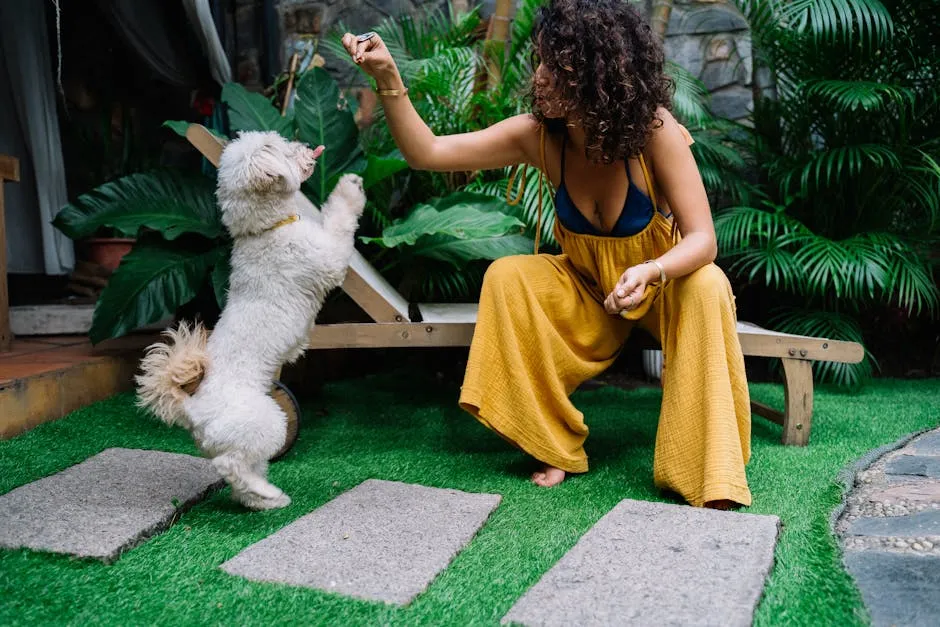
Clicker Training
Clicker training is a game-changer in the world of positive reinforcement. This method uses a small device that makes a distinct clicking sound to mark desired behaviors. The beauty of clicker training lies in its precision. The click tells your dog exactly what they did right, making it easier for them to understand what you want.
To start, introduce the clicker by clicking it and immediately rewarding your dog with a treat. Repeat this until they associate the sound with rewards. Next, when your dog performs a desired behavior, click! Then, follow up with a treat.
Practice regularly. Keep sessions short and fun to maintain interest. Gradually phase out the treats as your dog becomes more reliable. With patience and practice, your pup will be performing tricks faster than you can say “clicker!”

Incorporating Playtime as a Reward
Why not turn training into a game? Integrating playtime as a reward can make training sessions lively and enjoyable. Dogs love to play fetch, tug-of-war, or even chase. Use these games to reinforce commands. For example, after your dog successfully sits, toss a ball as a reward!
You can also teach commands through play. Use fetch to reinforce “drop it,” or call them back for “come” when they retrieve the ball. This approach keeps your dog engaged and makes learning feel less like a chore and more like a fun outing.
Rotate the games to keep things fresh. A bored dog is a stubborn dog. Mixing up activities can maintain your pup’s enthusiasm during training. So, grab some toys and let the fun begin!
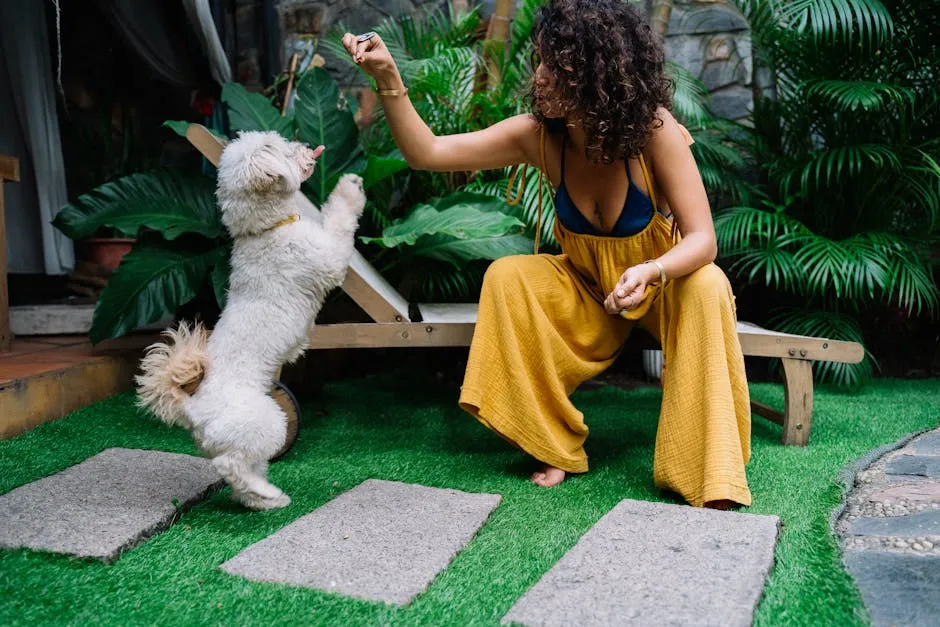
Gradual Increase in Difficulty
Training isn’t a sprint; it’s a marathon! Gradually increasing the difficulty of your training exercises keeps your stubborn dog engaged and motivated. Start with simple commands in a distraction-free environment. As your dog masters these, slowly introduce more complex tasks and distractions.
For instance, once your dog has mastered “sit” at home, try it in the backyard, then at a park. This gradual progression builds confidence and ensures they understand each command before moving on to the next challenge.
Be sure to celebrate every success, no matter how small. This keeps the momentum going and reinforces their motivation to learn. Remember, patience is a virtue. With consistent practice, you’ll turn that stubborn pup into a well-trained superstar!
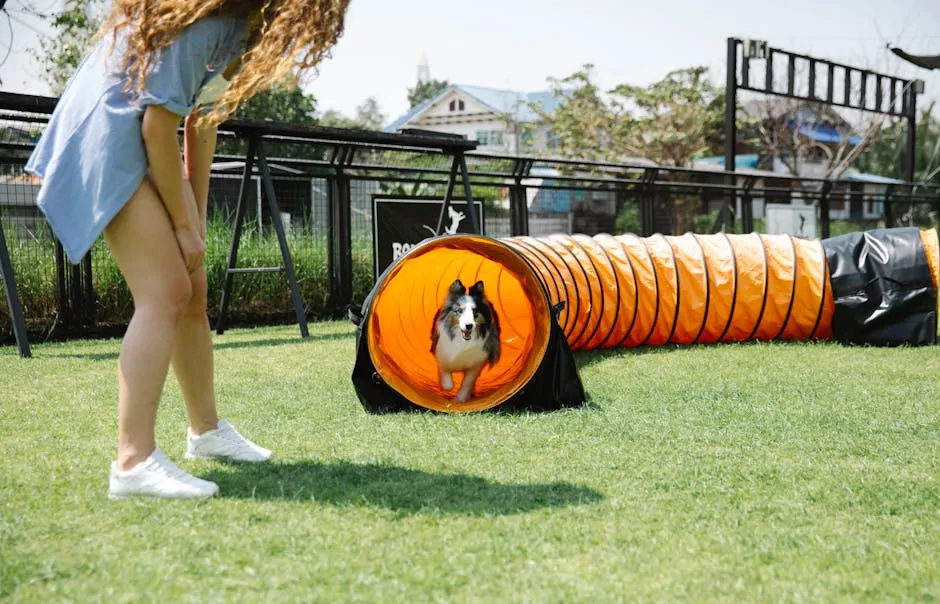
Celebrate Small Successes
Training a stubborn dog can often feel like herding cats. However, celebrating small victories during this process is essential! Recognizing your dog’s progress, no matter how minor, fuels motivation and builds confidence. Celebrate that first sit, a successful recall, or even the moment they resist the urge to bark at the mailman.
To reinforce these small wins effectively, make your celebrations lively. Use enthusiastic praise, jump around, or give them a favorite toy as a reward. This creates positive associations with their achievements. You could also keep a training journal to jot down these little successes. Reflecting on progress can keep you motivated too. Remember, every accomplishment counts, and your dog will appreciate your excitement!
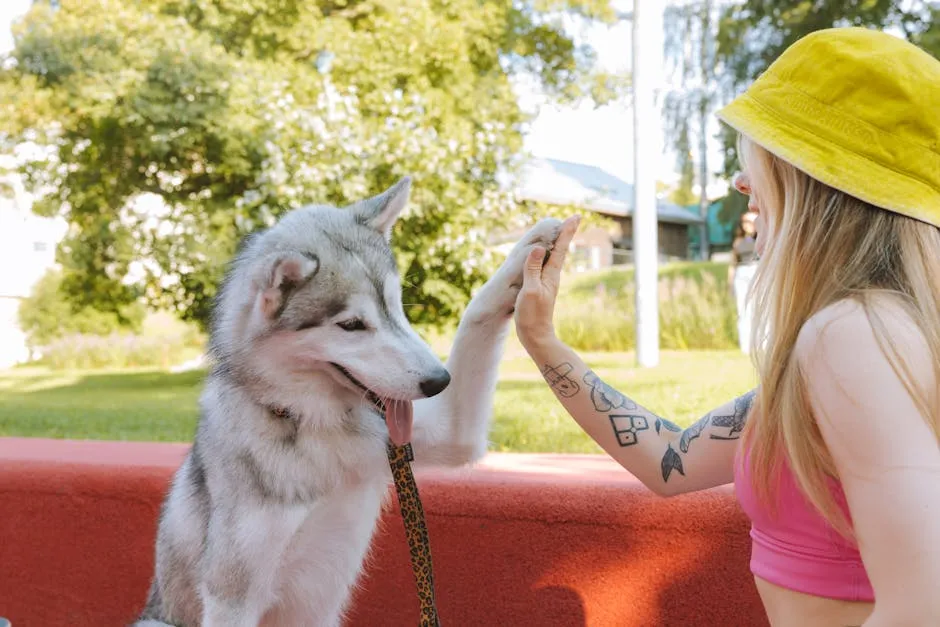
Managing Distractions
Distractions can derail even the most focused training sessions. Your dog’s attention can waver at the sight of a squirrel or the sound of a passing car. To tackle this, start training in a quiet, familiar environment. This reduces external stimuli that could divert their focus.
As your dog becomes more responsive, gradually introduce distractions. For example, practice commands while someone walks by or tosses a ball nearby. Start with low-level distractions, then increase the challenge. This technique enhances learning by teaching your dog to maintain focus amid distractions. Always reward them for staying on task, and soon enough, your stubborn pup will be a pro at ignoring distractions!
If you’re looking for effective dog training tips for adopting a rescue dog with anxiety, understanding their needs is crucial.
As you embark on your training journey, consider having a dog training guide book on hand. It can provide additional insights and techniques to help you and your pup succeed!
Please let us know what you think about our content by leaving a comment down below!
Thank you for reading till here 🙂
All images from Pexels

